Equipment
Build Your Own Fishing Pole Rack: A DIY 8 Steps Guide
As an avid angler, there’s nothing more frustrating than tangled lines, damaged rods, and a cluttered fishing gear storage area. Not only does it add unnecessary stress to your fishing trips, but it can also lead to costly replacements and repairs. Fortunately, there’s a simple and cost-effective solution: building your own fishing pole rack. This DIY project not only helps organize your gear but also adds a personal touch to your fishing setup, making it a practical and rewarding endeavor. In this comprehensive guide, we’ll walk you through the entire process of constructing a sturdy and functional fishing pole rack that will keep your rods safe, organized, and within easy reach.
You may also like to read “ Fishing with the Double Drop Bottom Rig” article.
The Benefits of a Homemade Fishing Pole Rack
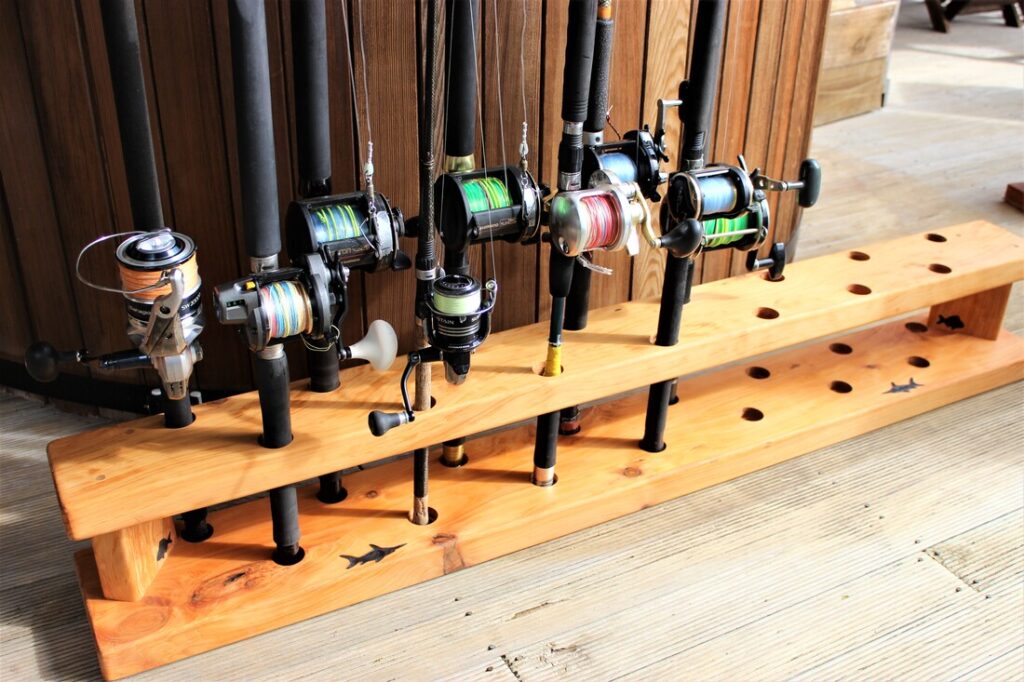
DIY Fishing Pole Rack
Before diving into the step-by-step instructions, let’s explore the advantages of having a custom-built fishing pole rack:
Organization and Accessibility
A well-designed fishing pole rack keeps your rods neatly arranged and easily accessible. No more scrambling through a tangled mess or risking damage to your precious gear. With your rods properly stored, you can quickly grab the one you need and hit the water without any hassle.
Space-Saving Solution
Most anglers have limited storage space, whether it’s in a garage, basement, or dedicated fishing room. A DIY fishing pole rack allows you to maximize the available space by utilizing vertical storage, freeing up valuable floor space for other gear or equipment.
Cost-Effective Alternative
Store-bought fishing pole racks can be expensive, especially if you have a large collection of rods. By building your own, you’ll save a significant amount of money while still achieving a high-quality and customizable solution tailored to your specific needs.
Personalization and Pride
There’s something deeply satisfying about crafting your own fishing pole rack. You can customize it to your exact specifications, choose the materials and finishes that suit your personal style, and take pride in your handiwork every time you use it.
Materials and Tools Needed
Before embarking on your DIY fishing pole rack project, gather the necessary materials and tools. Here’s a list to get you started:
Materials:
- Wood (plywood, cedar, or your preferred material)
- Wood glue
- Wood screws or nails
- Sandpaper
- Stain or paint (optional)
- Felt or rubber lining (optional)
- Dowels or PVC pipes (for rod holders)
Tools:
- Saw (hand saw, circular saw, or jigsaw)
- Drill and drill bits
- Measuring tape
- Pencil
- Clamps
- Hammer
- Sanding block or orbital sander
Note: The specific quantities and dimensions of the materials will depend on the size and design of your fishing pole rack. It’s recommended to plan ahead and make a detailed list based on your desired specifications.
Step-by-Step DIY Fishing Pole Rack Guide
Now that you have the necessary materials and tools, it’s time to roll up your sleeves and get to work. Follow these step-by-step instructions to build your very own fishing pole rack:
1. Plan and Design
Start by deciding on the size and layout of your fishing pole rack. Consider the number of rods you need to store, the available space, and your personal preferences. Sketch out a design and take accurate measurements to ensure a proper fit.
2. Cut the Pieces
Using your saw, carefully cut the wood pieces according to your measurements. Double-check each piece for accuracy before moving on to the next step.
3. Assemble the Frame
Begin by assembling the frame of your fishing pole rack. Use wood glue and screws or nails to secure the pieces together. Clamps can help hold the pieces in place while the glue dries.
4. Install the Rod Holders
Next, determine the placement and spacing of your rod holders. Drill holes or secure dowels or PVC pipes to create the slots where your fishing rods will rest.
5. Sand and Finish
Once the frame and rod holders are in place, sand the entire structure to achieve a smooth finish. If desired, apply a stain or paint to personalize the look of your fishing pole rack.
6. Add Protective Lining (Optional)
For extra protection, consider lining the rod holders with felt or rubber strips. This will help prevent scratches and damage to your fishing rods.
7. Mount or Position
If wall-mounting your fishing pole rack, securely attach it to the desired location using appropriate hardware. Alternatively, you can position it as a freestanding unit in a corner or against a wall.
8. Organize and Enjoy
Finally, it’s time to organize your fishing rods on your newly built fishing pole rack. Admire your handiwork and enjoy the satisfaction of having a custom-made, functional storage solution for your beloved fishing gear.
Design Inspiration and Variations
While the basic structure of a fishing pole rack is straightforward, there are countless design variations and customization options to explore. Here are a few ideas to inspire your creativity:
Wall-Mounted Racks
A wall-mounted fishing pole rack is a space-saving option that keeps your rods off the floor and easily accessible. You can create a simple horizontal design or incorporate vertical sections for additional storage.
Freestanding Racks
For those with ample floor space, a freestanding fishing pole rack can be a stylish and practical choice. Consider adding a base with casters for easy mobility or incorporating shelves or drawers for additional storage.
Angled or Vertical Designs
Angled or vertical fishing pole racks can be visually appealing and efficient, especially for those with limited wall space. These designs can be wall-mounted or freestanding, depending on your preferences.
Rustic or Modern Styles
The materials and finishes you choose will greatly influence the overall style of your fishing pole rack. For a rustic look, consider using reclaimed wood or naturally weathered materials. Alternatively, sleek lines and modern finishes can create a contemporary and minimalist aesthetic.
Combo Racks
If you have multiple types of fishing gear, such as rods, reels, and tackle boxes, consider building a combo rack that can store everything in one convenient location.
Complementary Fishing Gear Storage Solutions
While a fishing pole rack is a essential storage solution, it’s just one piece of the puzzle. Here are some complementary DIY projects to consider for comprehensive fishing gear organization:
Tackle Box Organizer: Keep your lures, hooks, and other tackle neatly arranged with a customized tackle box organizer.
Fishing Net Holder: Store your fishing nets securely and within easy reach with a dedicated holder.
Rod and Reel Case: Protect your valuable rods and reels during transport with a sturdy and stylish case.
Bait Cooler Stand: Keep your bait fresh and accessible with a convenient cooler stand for your fishing adventures.
By combining these DIY projects, you’ll create a comprehensive and organized fishing gear storage system that will make your angling experiences more enjoyable and efficient.
Maintenance and Care Tips
To ensure your handcrafted fishing pole rack remains in top condition for years to come, follow these maintenance and care tips:
- Regularly Clean and Dust: Use a soft cloth or brush to remove any accumulated dust or debris from your fishing pole rack. This will help preserve the finish and prevent scratches or damage to your rods.
- Check for Loose Hardware: Periodically inspect the screws, nails, or any other hardware used in the construction of your rack. Tighten or replace any loose components to maintain structural integrity.
- Apply Protective Coatings: If your fishing pole rack is made of wood, consider reapplying a protective stain, varnish, or polyurethane coating every few years to prevent fading, cracking, or warping.
- Avoid Excessive Moisture: While occasional exposure to moisture is unavoidable, try to keep your fishing pole rack in a dry environment to prevent mold, mildew, or rot.
- Rotate Rods: To prevent indentations or uneven wear on your rods, make a habit of rotating their positions on the rack periodically.
By following these simple maintenance and care tips, your DIY fishing pole rack will serve you well for many fishing seasons to come, ensuring your gear remains organized, protected, and ready for action.
Conclusion
Building your own fishing pole rack is a rewarding DIY project that combines practicality, creativity, and a
sense of accomplishment. By following the step-by-step guide and design inspiration provided in this article, you’ll not only end up with a functional and customized storage solution but also gain a deeper appreciation for the craftsmanship involved in creating something with your own hands.
Remember, the key to a successful DIY fishing pole rack lies in proper planning, accurate measurements, and attention to detail. Don’t be afraid to experiment with different materials, designs, and finishes to create a rack that truly reflects your personal style and fishing preferences.
Imagine the satisfaction of organizing your beloved fishing rods on a rack you built yourself, knowing that each time you head out on the water, your gear is neatly stored and easily accessible. No more tangled lines, damaged rods, or cluttered storage areas – just a streamlined and efficient setup that allows you to focus on what truly matters: enjoying the thrill of the catch.
So, gather your materials, roll up your sleeves, and embark on this DIY adventure. With a little creativity, patience, and elbow grease, you’ll soon be the proud owner of a one-of-a-kind fishing pole rack that not only enhances your angling experience but also serves as a testament to your DIY skills and passion for the sport.
Happy building, and tight lines!
Equipment
6 Effective Worm Baits for Carp Fishing

Carp fishing is a beloved pastime for anglers worldwide, blending strategy, patience, and the thrill of landing a hard-fighting fish. Among the many baits used to tempt carp, worm baits stand out for their versatility, affordability, and universal appeal. These wriggling, protein-packed morsels mimic the natural diet of carp, making them irresistible in lakes, rivers, and ponds. Whether you’re a beginner casting for your first carp or a seasoned angler targeting a trophy specimen, mastering the use of worm baits can elevate your success.
You may also like to read “ Why Is It So Hard to Catch Crappie Fish” article.
Why Worm Baits Are Ideal for Carp Fishing

Worm Baits
Carp are opportunistic feeders with a keen sense of smell and taste, making them highly responsive to natural baits like worms. Worms are rich in amino acids and proteins, closely resembling the insects, larvae, and small organisms carp naturally consume. Their movement in the water—whether wriggling on a hook or sinking slowly—triggers carp’s predatory instincts, drawing strikes even in heavily fished waters. Additionally, worms are widely available, easy to store, and adaptable to various rigging techniques, from float fishing to bottom rigs.
The effectiveness of worm baits lies in their simplicity and universal appeal. Unlike artificial lures or complex boilies, worms require minimal preparation, making them accessible for anglers of all skill levels. For those looking to refine their carp fishing approach, our guide to essential carp fishing gear offers tips on pairing worm baits with the right rods, reels, and rigs. By understanding the nuances of different worm types and presentations, anglers can unlock the full potential of these natural baits and consistently land carp.
The Biology Behind Carp Attraction to Worms
Carp rely heavily on their olfactory senses to locate food, detecting chemical cues from worms even in murky water. The scent and texture of worms, combined with their natural movement, make them a prime target. Studies show that carp are particularly drawn to the amino acids released by worms, which signal a high-protein meal. For example, an angler fishing a cloudy lake in Michigan might find that a wriggling red worm outperforms other baits, as its scent disperses widely, attracting carp from a distance. This biological advantage makes worms a go-to choice in diverse fishing conditions.
Versatility Across Fishing Environments
Worm baits excel in a variety of carp fishing scenarios, from shallow ponds to deep rivers. They can be used in clear or murky water, during warm summer months or cooler seasons, and in both still and flowing waters. Their adaptability allows anglers to experiment with different rigs and presentations, tailoring their approach to the carp’s behavior. Whether you’re fishing a weedy margin or a gravel-bottomed lake, worms offer a reliable option to entice carp, making them a staple in any tackle box.
1. Red Worms (Red Wigglers)
Red worms, also known as red wigglers, are a top choice for carp fishing due to their vibrant color, lively movement, and strong scent. These small worms, typically 2–4 inches long, are widely available at bait shops or through retailers like Uncle Jim’s Worm Farm.
Why Red Worms Work
Red worms release a potent scent that carp can detect from a distance, and their wriggling action mimics struggling prey, triggering strikes. They’re particularly effective in shallow waters or when float fishing, as their movement stays visible to cruising carp. An angler targeting carp in a small Ohio pond might thread a red worm onto a size 8 hook, suspending it under a bobber to attract fish feeding near the surface.
Presentation Tips
To maximize effectiveness, pinch a red worm into 1-inch segments to release more scent, or thread a whole worm onto the hook for a lively presentation. Use a light float rig or a simple ledger rig to keep the bait near the bottom, where carp often feed. In a real-world scenario, an angler fishing England’s River Wye might cast a red worm rig into a slow-moving pool, landing a 10-pound carp drawn to the bait’s scent trail.
2. Nightcrawlers
Nightcrawlers are larger worms, often 6–8 inches long, prized for their durability and appeal to bigger carp. Available at bait shops or through suppliers like Bass Pro Shops, they’re a versatile option for targeting trophy fish.
Advantages of Nightcrawlers
Nightcrawlers’ size and toughness make them ideal for casting long distances or fishing in strong currents, as they stay on the hook longer than smaller worms. Their robust scent and meaty texture attract larger carp, especially in lakes with heavy fishing pressure. For example, an angler fishing a busy carp lake in Ontario might use a nightcrawler on a hair rig, tempting a 20-pound carp that’s ignored boilies.
How to Rig Nightcrawlers
Thread a nightcrawler onto a size 6 or 4 hook, leaving a portion dangling to maximize movement, or chop it into pieces for a method feeder rig to create a scent cloud. In a flowing river like the Mississippi, an angler might use a sliding sinker rig with a half nightcrawler, letting it bounce along the bottom to entice a feeding carp.
3. Dendrobaena Worms
Dendrobaena worms, medium-sized worms popular in Europe, are gaining traction among carp anglers for their balance of size and activity. They’re available from specialty bait suppliers and are known for their resilience.
Why Dendrobaena Worms Shine
Dendrobaena worms are slightly larger than red worms but more active than nightcrawlers, offering a middle ground for carp fishing. Their vigorous wriggling and strong scent make them effective in both still and moving waters. An angler fishing a weedy UK canal might use a Dendrobaena worm on a float rig, attracting a carp feeding among lily pads.
Presentation Techniques
Hook a single Dendrobaena worm through the middle for maximum movement, or combine two on a hair rig for a larger offering. In a murky lake, chopping the worm and mixing it with groundbait can create an irresistible scent trail. A real-world example is an angler in Ireland’s Lough Corrib, using a chopped Dendrobaena mix to draw a school of carp to their swim.
4. Lobworms
Lobworms, a larger cousin of nightcrawlers, are thick, juicy worms ideal for targeting specimen carp. Often harvested locally or purchased from bait suppliers, they’re a premium choice for big fish.
Benefits of Lobworms
Lobworms’ size and scent make them a magnet for large carp, especially in deep or heavily fished waters. Their durability allows multiple casts without breaking, perfect for long sessions. An angler fishing a gravel pit in southern England might use a whole lobworm on a bolt rig, landing a 25-pound mirror carp drawn to the bait’s bold presentation.
Rigging Lobworms
Hook a lobworm through the saddle for a natural look, or chop it into chunks for a feeder rig to release juices. In a river with strong flow, like the Danube, an angler might use a lobworm on a heavy ledger rig, anchoring it in a deep pool where big carp lurk.
5. Brandling Worms
Brandling worms, also called tiger worms, are small, striped worms found in compost heaps and sold by bait shops. Their distinctive odor makes them a secret weapon for carp fishing.
Why Brandling Worms Work
Brandling worms have a pungent smell that carp find irresistible, especially in murky or cold water where scent is key. Their small size is perfect for finicky carp or when fishing light tackle. An angler in a Wisconsin farm pond might use a brandling worm on a size 10 hook, tempting a cautious carp in early spring.
How to Use Brandling Worms
Hook one or two brandling worms lightly to preserve their movement, or mix chopped worms into groundbait for a chum effect. In a small UK fishery, an angler might scatter chopped brandlings around a float rig, creating a scent cloud that pulls carp into their swim.
6. Wax Worms
Wax worms, the larvae of wax moths, are an unconventional but highly effective worm bait for carp. Available from bait shops or retailers like Cabela’s, they’re a soft, creamy option for selective fish.
Advantages of Wax Worms
Wax worms’ soft texture and high fat content make them a delicacy for carp, especially in overfished waters where standard baits are ignored. Their small size suits light rigs and finicky feeders. An angler fishing a pressured lake in New York might use a wax worm on a hair rig, hooking a 15-pound carp that’s wary of boilies.
Presenting Wax Worms
Hook a single wax worm gently to avoid bursting it, or combine several on a small hook for a larger offering. In a clear pond, an angler might suspend a wax worm under a float, letting it sink slowly to attract carp cruising mid-water. Their delicate nature requires careful casting but yields impressive results.
Worm Bait Comparison Table
The table below compares the six worm baits, helping anglers choose the best option for their carp fishing needs.
| Worm Type | Best For | Size | Key Features |
|---|---|---|---|
| Red Worms | Shallow waters, float fishing | 2–4 inches | Vibrant color, strong scent, lively movement |
| Nightcrawlers | Trophy carp, strong currents | 6–8 inches | Durable, meaty, attracts large fish |
| Dendrobaena Worms | All-around use, weedy areas | 3–5 inches | Active, resilient, balanced size |
| Lobworms | Specimen carp, deep waters | 6–10 inches | Thick, juicy, high scent for big fish |
| Brandling Worms | Murky/cold water, finicky carp | 1–3 inches | Pungent odor, ideal for light tackle |
| Wax Worms | Pressured waters, selective carp | 0.5–1 inch | Soft texture, high fat, delicate presentation |
Practical Examples of Worm Bait Success
Worm baits shine in real-world carp fishing scenarios. Imagine an angler on a small lake in Illinois, using a red worm on a float rig to target carp feeding near lily pads. The worm’s wriggling action draws a 12-pound carp, hooked after a spirited fight. In another case, a UK angler fishing a commercial fishery uses a chopped Dendrobaena mix in a method feeder, landing multiple carp by creating a scent cloud that pulls fish to their swim. These examples show how worm baits adapt to different environments and carp behaviors.
Another scenario involves a river angler in Germany’s Rhine, rigging a lobworm on a heavy ledger rig to target a deep pool. The bait’s size and scent attract a 30-pound common carp, a trophy that highlights the power of lobworms for big fish. These stories demonstrate why worm baits are a trusted choice, offering reliability and versatility for anglers worldwide.
Tips for Maximizing Worm Bait Effectiveness
To get the most from worm baits, keep them fresh and lively by storing them in cool, moist conditions with bedding like peat moss. Experiment with rigging styles—float, ledger, or hair rigs—to match the water and carp behavior. In murky or cold water, chop worms to release more scent, and in clear water, use whole worms for natural movement. Pre-baiting your swim with chopped worms can draw carp to your area, increasing hookups. An angler in a heavily fished lake might scatter chopped nightcrawlers a day before fishing, setting the stage for a productive session.
Conclusion
Worm baits are a cornerstone of successful carp fishing, offering unmatched versatility, scent, and movement to tempt even the wariest fish. From the lively red worm to the robust lobworm, each of the six baits in this guide brings unique strengths to the table, catering to different waters, seasons, and carp sizes. Their affordability and ease of use make them accessible to beginners, while their effectiveness in challenging conditions appeals to experts. By mastering the preparation and presentation of red worms, nightcrawlers, Dendrobaena worms, lobworms, brandling worms, and wax worms, anglers can boost their catch rates and enjoy the thrill of landing carp. Next time you head to the water, pack a variety of worm baits and experiment with these techniques—your next trophy carp could be just a cast away.
Fishing Guides
How to Master the Art of Fly Fishing: A Step-by-Step Guide

Fly fishing is a captivating blend of skill, patience, and harmony with nature, offering anglers a unique way to connect with the water and its inhabitants. Unlike conventional fishing, fly fishing uses lightweight lures called flies to imitate natural prey, requiring precise casting techniques and a keen understanding of fish behavior. Whether you’re targeting trout in a babbling brook or chasing tarpon on a coastal flat, mastering fly fishing unlocks a world of adventure and fulfillment. This comprehensive step-by-step guide covers everything from selecting gear to perfecting your cast, providing practical tips and real-world examples for beginners and seasoned anglers alike.
You may also like to read “ Exploring the Versatility of Fishing Swivels” article.
Getting Started with Fly Fishing

Fly Fishing
Fly fishing stands apart from other angling methods due to its focus on casting lightweight flies using specialized rods, reels, and lines. The objective is to present the fly in a way that mimics insects, baitfish, or other prey, enticing fish to strike. Success hinges on mastering casting techniques, reading water conditions, and choosing the right fly for the situation. Fly fishing is versatile, thriving in freshwater rivers, lakes, and saltwater flats, with popular targets including trout, salmon, bass, and bonefish.
The magic of fly fishing lies in its blend of technical challenge and immersion in nature. Anglers must observe subtle cues—ripples on the water, insect hatches, or wind patterns—to outsmart their quarry. For beginners, the learning curve can feel steep, but the right gear and knowledge make it accessible. A great starting point is our guide to essential fishing gear, which outlines must-have items for fly fishing novices. With dedication, anyone can develop the skills to cast with precision and land fish with finesse.
The Rich Tradition of Fly Fishing
Fly fishing has a storied history, with origins tracing back to ancient Macedonia and widespread popularity in 15th-century England. It evolved into a refined sport, celebrated in literature by figures like Izaak Walton. Today, it’s a global passion, cherished for its elegance and meditative quality. Standing knee-deep in a river, casting rhythmically, and watching a trout rise to your fly creates a sense of peace and connection. For example, an angler on Montana’s Big Hole River might spend a morning casting to rising cutthroat trout, finding joy in the process regardless of the catch.
Why Fly Fishing Captivates Anglers
Fly fishing offers rewards that go beyond the catch. It allows access to pristine, remote waters where conventional lures often fail. It sharpens environmental awareness, as anglers learn to read currents and insect activity. Many enthusiasts also enjoy tying their own flies, adding a creative dimension. The sport’s challenges—perfecting a cast or fooling a wary fish—make every success deeply satisfying. Whether you’re fishing a small creek in Colorado or a saltwater flat in the Bahamas, fly fishing delivers a unique blend of adventure and tranquility.
Step 1: Assembling Your Fly Fishing Gear
The right equipment is the foundation of fly fishing success. Fly fishing gear is specialized, designed to cast lightweight flies with accuracy and control. Key components include the rod, reel, line, leader, tippet, and flies, each chosen based on the target species, water type, and fishing conditions.
Picking the Perfect Fly Rod and Reel
Fly rods are categorized by weight, from 1-weight for tiny streams to 12-weight for big saltwater fish. A 5-weight rod is ideal for beginners, versatile enough for trout, small bass, and panfish. Quality beginner rods, like those from Orvis, such as the Encounter series, offer performance without breaking the bank. The reel should match the rod’s weight, featuring a reliable drag system to handle fighting fish. For instance, an angler targeting bluegill in a local pond might use a 4-weight rod and reel combo, keeping the setup light and easy to manage.
Navigating Fly Lines, Leaders, and Tippets
Fly lines carry the weight needed to cast flies, with weight-forward lines being beginner-friendly due to their casting ease. The leader, a tapered monofilament line, connects the fly line to the fly, ensuring a delicate presentation. Tippets, thinner extensions of the leader, allow for precise fly placement. A 9-foot, 5X leader and tippet is a solid choice for trout fishing. An angler on Idaho’s Silver Creek, for example, might use a 6X tippet to present a tiny mayfly imitation to selective trout in crystal-clear water.
Selecting the Right Flies
Flies are divided into three main categories: dry flies (surface), nymphs (subsurface), and streamers (baitfish imitations). Beginners should carry a variety, such as Elk Hair Caddis for dry flies, Hare’s Ear for nymphs, and Clouser Minnows for streamers. For example, an angler on Wyoming’s Green River might use a Pale Morning Dun dry fly to match a summer mayfly hatch, enticing rising trout.
Step 2: Perfecting Your Fly Casting
Casting is the cornerstone of fly fishing, requiring practice to achieve distance, accuracy, and finesse. Unlike spin fishing, fly casting relies on the weight of the line to propel the fly, demanding a smooth, controlled motion.
Mastering the Overhead Cast
The overhead cast is the fundamental fly casting technique. Begin with 20–30 feet of line, holding the rod at a 45-degree angle. Accelerate the rod tip backward to the 1 o’clock position, pause to let the line straighten, then accelerate forward to the 11 o’clock position, stopping sharply to release the line. Practice in an open space, like a field, to avoid snags. A beginner in a park might spend an afternoon refining this cast, aiming for a tight loop that lands the fly softly on the water.
Advancing to Roll Cast and Double Haul
The roll cast is ideal for tight spaces, such as streams with overhanging branches. Pull the line taut, angle the rod back, and roll it forward to unfurl the line across the water. The double haul, used for distance, involves pulling the line with your free hand during the back and forward casts. An angler on Belize’s flats might use a double haul to cast 70 feet to a cruising permit, cutting through coastal winds. These techniques, explored in our guide to advanced angling skills, expand your casting repertoire.
Step 3: Reading the Water to Find Fish
Fly fishing success depends on locating fish, which requires “reading the water” to identify their feeding and resting spots. Understanding water features and fish behavior is key to placing your fly where fish are active.
Spotting Prime Fishing Zones
Riffles, where water flows over shallow rocks, are oxygen-rich and attract feeding fish like trout. Pools, deeper and slower, serve as resting areas for larger fish. Seams, where fast and slow currents converge, are feeding highways. An angler on Oregon’s Rogue River might target a seam near a riffle, casting a nymph to drift into a steelhead’s feeding lane. Watching for rises or insect activity helps pinpoint where fish are feeding.
Matching the Hatch
“Matching the hatch” involves selecting a fly that imitates the insects fish are eating. Observe hatches—swarms of mayflies, caddisflies, or stoneflies—and choose a fly that matches their size, color, and behavior. During a Hendrickson hatch on New York’s Beaverkill River, an angler might use a size 14 dry fly to tempt rising brown trout. Carrying a small net to capture insects can help identify the perfect fly pattern.
Step 4: Presenting the Fly and Landing Fish
Effective fly presentation and fish-fighting skills turn strikes into catches. A natural presentation fools fish, while proper landing techniques ensure a safe catch or release.
Achieving a Drag-Free Drift
Present the fly upstream or across the current to achieve a drag-free drift, where the fly moves naturally without the line pulling it. Mend the line (lift and reposition it) to correct drag caused by currents. An angler on Montana’s Clark Fork River might cast a dry fly upstream to a rising rainbow trout, mending the line to keep the fly floating naturally. Timing and observation are critical to mastering this technique.
Fighting and Landing Fish
When a fish strikes, set the hook with a gentle lift of the rod tip to avoid breaking the tippet. Keep the rod tip up to absorb runs, and use the reel’s drag to tire the fish. Net the fish headfirst to minimize stress, especially for catch-and-release. For example, an angler landing a 22-inch cutthroat trout in Utah’s Provo River might take several minutes to bring it to the net, ensuring a safe release to preserve the fishery.
Fly Fishing Gear Comparison Table
The table below compares essential fly fishing gear for beginners, helping you select the right equipment for your needs.
| Gear | Best For | Price Range | Key Features |
|---|---|---|---|
| 5-Weight Fly Rod | Trout, small bass, panfish | $100–$400 | Versatile, easy to cast, beginner-friendly |
| 8-Weight Fly Rod | Saltwater, large freshwater fish | $150–$500 | Handles wind, larger flies, strong fish |
| Weight-Forward Line | General-purpose casting | $30–$100 | Easy to cast, good for beginners |
| Fly Assortment | Various species, conditions | $20–$50 | Includes dry flies, nymphs, streamers |
Tips for Lifelong Fly Fishing Growth
Fly fishing is a journey of continuous improvement. Join a local fly fishing club or attend a casting workshop to learn from experienced anglers. Practice tying your own flies to create custom patterns for local waters. Keep a fishing journal to record conditions, flies used, and catches, helping you refine your approach. For example, an angler on California’s Truckee River might note that a size 16 caddis fly worked best during an evening hatch, guiding future trips. These habits build skills and deepen your connection to the sport.
Conclusion
Mastering the art of fly fishing is a rewarding endeavor that combines technical skill, environmental awareness, and a passion for the outdoors. From choosing the right gear to perfecting your cast, reading the water, and presenting the fly, each step brings you closer to the thrill of landing a fish on a fly. Whether you’re casting for trout in a mountain stream or battling bonefish on a tropical flat, the techniques in this guide will set you on the path to success. With practice and dedication, you’ll not only catch more fish but also forge a deeper bond with the natural world. Grab your rod, tie on a fly, and start your fly fishing adventure today—the water is waiting.
Equipment
Exploring the Versatility of Fishing Swivels: A Must-Have Tackle Accessory
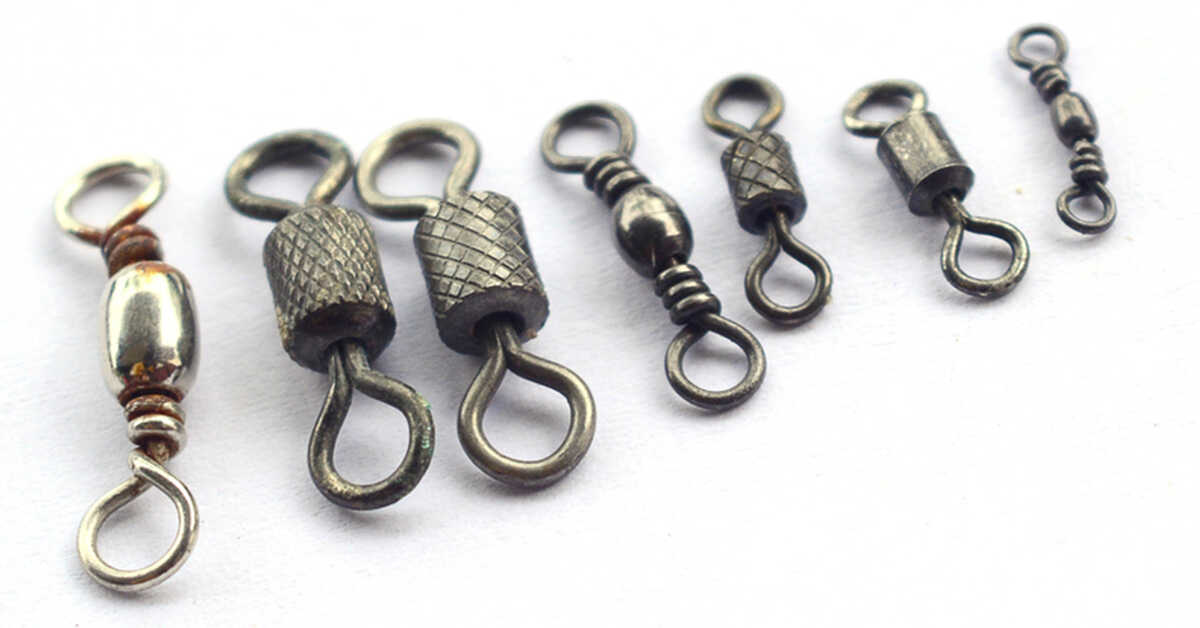
Fishing is a pursuit that combines skill, strategy, and the right gear, and one of the most essential yet often overlooked tools in an angler’s arsenal is the fishing swivel. These small metal devices play a pivotal role in preventing line twists, enhancing lure movement, and ensuring a rig performs at its best. From freshwater ponds to the open ocean, fishing swivels are a versatile accessory that can make or break a day on the water. Whether you’re targeting trout with a light spinning setup or battling marlin with heavy tackle, understanding the types and uses of swivels can elevate your fishing game.
You may also like to read “ Halibut – Record-Breaking Huge Catch ” article.
The Role of Fishing Swivels in Angling Success

Fishing Swivels
A fishing swivel is a compact metal connector that joins two sections of fishing line, allowing them to rotate independently. This rotation prevents line twist—a common issue that can weaken lines or cause tangles—and ensures lures and baits move naturally to attract fish. Swivels are available in various designs, each tailored to specific fishing techniques, environments, and species. Their ability to solve practical problems while enhancing rig performance makes them indispensable for anglers of all experience levels.
The significance of swivels becomes clear in real-world scenarios. For instance, when casting a spinning lure for bass, the lure’s rotation can twist the line, reducing its strength and causing knots. A swivel eliminates this problem, keeping the line smooth and reliable. To learn more about essential tackle, explore our guide to building a complete tackle box, which highlights swivels as a core component. By incorporating swivels into your setups, you protect your gear and increase your chances of landing more fish.
A Brief History of Fishing Swivels
Fishing swivels have evolved significantly from their early days. In the past, anglers relied on knots or crude connectors to join lines, but these often failed under stress or caused tangles. Modern swivels are engineered for durability and performance, with features like ball bearings for smooth rotation and corrosion-resistant materials for saltwater use. Brands like Spro have led the way in creating high-strength swivels that withstand the pull of trophy fish, reflecting the innovation that has made swivels a staple in contemporary fishing.
Key Functions of Swivels
Swivels serve multiple functions that enhance fishing efficiency. They prevent line twist, which is critical when using spinning lures, live bait, or trolling at high speeds. They also enable quick rig changes, allowing anglers to swap lures or weights without retying knots. Additionally, swivels act as a buffer between the main line and leader, absorbing shock from aggressive fish. For example, an angler fishing for striped bass in the Chesapeake Bay might use a barrel swivel to connect a fluorocarbon leader to a braided main line, ensuring smooth lure action and reducing the risk of line failure during a fight.
Types of Fishing Swivels and Their Uses
Fishing swivels come in several designs, each optimized for specific fishing scenarios. Understanding these types helps anglers select the right swivel for their target species, environment, and technique, whether in freshwater, saltwater, or brackish waters.
Barrel Swivels: The Versatile Standard
Barrel swivels are the most common type, featuring two rotating eyes connected by a cylindrical body. They’re affordable, compact, and reliable, making them ideal for a wide range of applications, particularly in freshwater fishing. Barrel swivels are often used in setups like Carolina rigs for bass or worm harnesses for walleye. Their small size minimizes drag, and they come in strengths from 10 to over 100 pounds. For instance, an angler targeting crappie in a Missouri reservoir might use a size 10 barrel swivel to prevent line twist from a jig’s subtle movements.
Ball Bearing Swivels: Built for Heavy Duty
Ball bearing swivels are engineered for high-stress scenarios, such as offshore trolling or big game fishing. They feature internal ball bearings that ensure smooth rotation under heavy loads, making them perfect for species like tuna, sailfish, or marlin. While more expensive, their durability and performance are unmatched. A deep-sea angler off the coast of Hawaii might use a ball bearing swivel rated for 300 pounds to troll a skirted lure, ensuring the lure tracks naturally without twisting the line, even at 10 knots.
Snap Swivels: Speed and Convenience
Snap swivels combine a swivel with a snap clip, allowing anglers to change lures or weights quickly. They’re ideal for dynamic fishing situations, such as surf casting or when testing different baits. Snap swivels are particularly beginner-friendly, simplifying rig adjustments. For example, a surf angler on North Carolina’s Outer Banks might use a snap swivel to switch between a metal spoon and a cut bait rig while targeting bluefish, adapting to changing conditions without cutting the line.
Three-Way Swivels: Complex Rig Solutions
Three-way swivels have three rotating eyes, enabling specialized rigs like dropper loops or live bait setups. They’re commonly used in saltwater fishing for bottom-dwelling species like flounder, redfish, or cod. An angler fishing the Gulf of Mexico might use a three-way swivel to rig a live mullet with a sinker, keeping the bait near the bottom while allowing it to swim freely. These swivels require careful setup to avoid tangles but offer unmatched flexibility for intricate rigs.
The Benefits of Fishing Swivels
Fishing swivels provide a host of advantages that make them a critical tackle accessory. From protecting your line to improving catch rates, their impact is felt across all fishing styles.
Eliminating Line Twist and Wear
Line twist is a persistent problem, especially when using spinning lures, live bait, or trolling at high speeds. Twisted line weakens over time, increasing the risk of breakage during a fight. Swivels prevent this by allowing the lure or bait to rotate independently, preserving line integrity. For example, an angler trolling for king salmon in Lake Michigan might use a ball bearing swivel to keep their flasher from twisting the braided line, ensuring the rig remains strong for landing a 25-pound fish.
Enhancing Lure and Bait Movement
Swivels improve the presentation of lures and baits by reducing resistance, allowing them to move naturally in the water. This is crucial for mimicking real prey and triggering strikes. A trout angler in Idaho, for instance, might use a micro barrel swivel to connect a Rooster Tail spinner, ensuring the blade spins freely to attract aggressive cutthroat trout. This enhanced movement can turn a slow day into a productive one, making swivels a game-changer for presentation.
Adaptability Across Techniques
Swivels are versatile enough to support nearly every fishing technique, from ultralight spinning for panfish to heavy-duty trolling for billfish. Their range of sizes and strengths accommodates diverse setups, making them a universal tool. An angler experimenting with new methods can rely on swivels to streamline their rigs, as explored in our guide to versatile fishing techniques. This adaptability ensures swivels remain relevant, no matter the species or environment.
Selecting the Perfect Fishing Swivel
Choosing the right swivel involves considering factors like target species, fishing conditions, and rig requirements. The table below outlines key swivel types and their best uses, helping anglers make informed decisions.
| Swivel Type | Best For | Strength Range | Key Features |
|---|---|---|---|
| Barrel Swivel | Freshwater, general-purpose fishing | 10–100 lbs | Compact, affordable, reliable rotation |
| Ball Bearing Swivel | Offshore trolling, big game fishing | 50–500 lbs | Smooth rotation, high strength, durable |
| Snap Swivel | Surf casting, lure swapping | 20–150 lbs | Quick changes, versatile, easy to use |
| Three-Way Swivel | Saltwater bottom fishing, complex rigs | 30–200 lbs | Multiple connection points, specialized use |
Matching Swivel Size to Line Strength
Swivel size should align with the strength of your fishing line to maintain balance. A 15-pound test monofilament line pairs well with a size 7 barrel swivel, while a 100-pound braided line requires a heavier ball bearing swivel. Using an oversized swivel can disrupt lure action, while an undersized one may fail under pressure. An angler targeting catfish in the Ohio River might select a size 3 barrel swivel for a 30-pound line, ensuring a robust yet streamlined rig for bottom fishing.
Accounting for Environmental Factors
The fishing environment—freshwater, saltwater, or brackish—dictates swivel material and design. Saltwater swivels, such as those from TackleDirect, use corrosion-resistant materials like stainless steel or nickel-plated brass to withstand harsh conditions. Freshwater swivels can be simpler, as corrosion is less of a concern. A saltwater angler in the Florida Keys might choose a corrosion-resistant ball bearing swivel for trolling wahoo, while a freshwater angler in Minnesota might use a standard barrel swivel for pike fishing.
Practical Examples of Swivel Applications
Swivels prove their worth in diverse fishing scenarios. Consider a fly angler on Colorado’s Arkansas River targeting brown trout. By adding a micro barrel swivel between their tippet and a woolly bugger, they prevent line twist from the fly’s drift, resulting in more hookups. In contrast, a charter captain off the Gulf Coast uses ball bearing swivels to troll for king mackerel, allowing diving plugs to track naturally at high speeds without tangling the line. These examples highlight swivels’ ability to address specific challenges, boosting efficiency and success.
Another scenario involves a pier angler in Southern California fishing for yellowtail. Using a snap swivel, they quickly switch between a live sardine and a surface iron lure to match the fish’s feeding patterns, capitalizing on a brief feeding window. The snap swivel’s convenience saves critical time, leading to a successful catch. These real-world applications demonstrate why swivels are a trusted tool across fishing disciplines.
Avoiding Common Swivel Mistakes
While swivels are straightforward, misuse can diminish their effectiveness. A frequent mistake is using a swivel that’s too large or small for the line, which can affect rig balance or cause failure. Another error is neglecting maintenance, particularly in saltwater, where corrosion can weaken swivels if not rinsed after use. Anglers should also steer clear of low-quality swivels, which may seize up or break under stress. By selecting high-quality swivels from reputable brands and matching them to their setup, anglers can ensure optimal performance and avoid setbacks.
Conclusion
Fishing swivels may be small, but their impact on angling success is profound. By preventing line twist, enhancing lure presentation, and supporting a wide range of techniques, swivels are a must-have tackle accessory for every angler. Whether you’re using a barrel swivel for freshwater bass, a ball bearing swivel for offshore trolling, or a snap swivel for surf casting, these devices streamline your rigs and boost your catch rates. Their versatility across freshwater and saltwater environments, combined with their ability to solve common fishing challenges, makes them indispensable. As you prepare for your next fishing trip, make sure your tackle box includes a selection of quality swivels—your line, lures, and fishing memories will benefit immensely.
-

 Fishing Guides5 months ago
Fishing Guides5 months agoWhy Is Dungeness Crab Season So Popular?
-
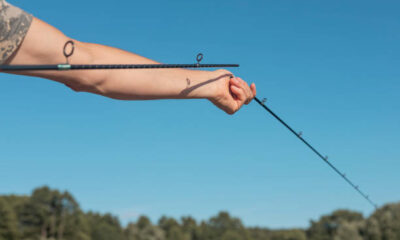
 Equipment10 months ago
Equipment10 months agoHow to Repair a Broken Fishing Rod Tip Like a Pro
-

 Fishing Guides1 year ago
Fishing Guides1 year agoThe Secret to Catching More Catfish: Chicken Gizzards as Bait
-

 Fishing Guides1 year ago
Fishing Guides1 year agoA Beginner’s Guide to Smallmouth Bass Fishing
-

 Equipment11 months ago
Equipment11 months ago10 Reasons to Choose the Ozark Trail Kayak Angler 10
-

 Fishing Guides1 year ago
Fishing Guides1 year agoThe Truth About Mullet Fish: Is It a Delicious and Nutritious Fish?
-

 Fishing Guides1 year ago
Fishing Guides1 year agoHow to Trap Snapping Turtles Safely: Every tip you need to know
-

 Fishing Guides11 months ago
Fishing Guides11 months agoDungeness Crab vs Snow Crab: Which is the Winner?
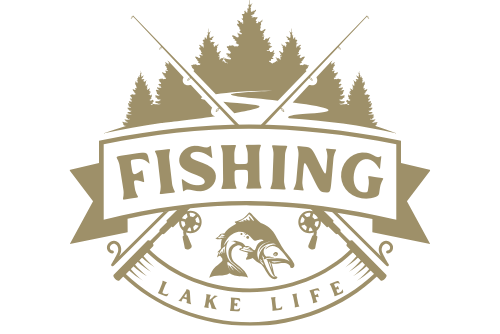






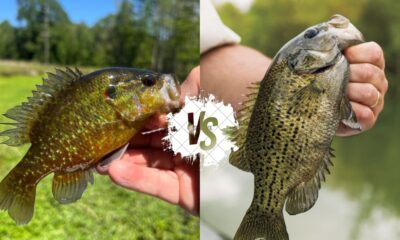
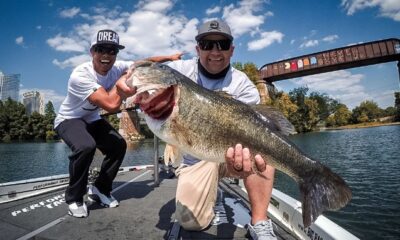
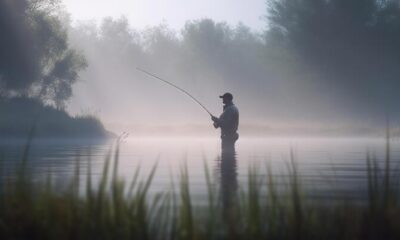

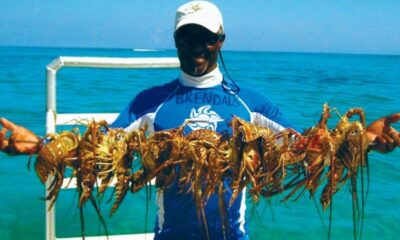
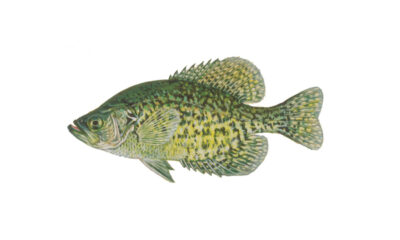

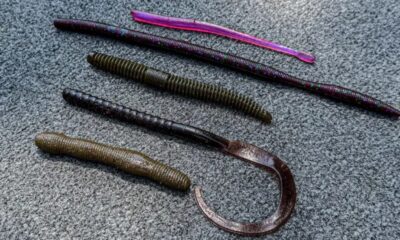





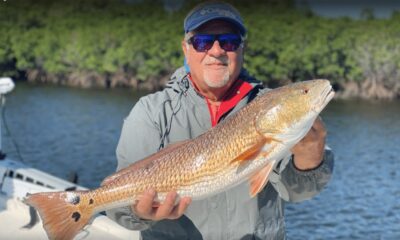

Pingback: Master the Double Jig Rig: A Game-Changer for Crappie Fishing - Lake Life Fishing